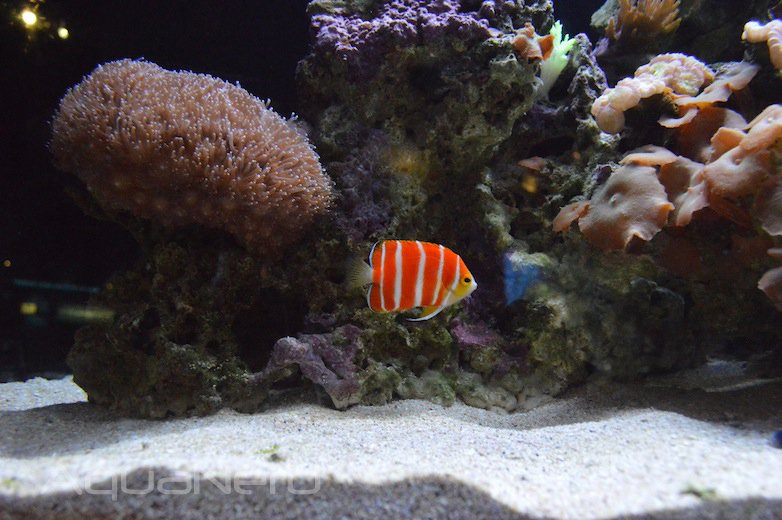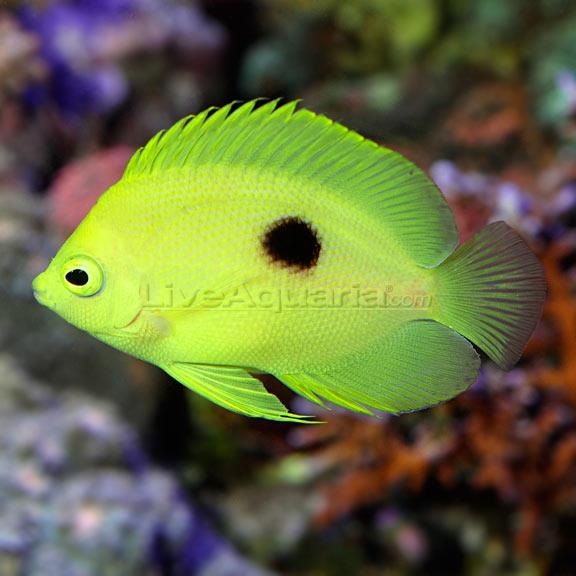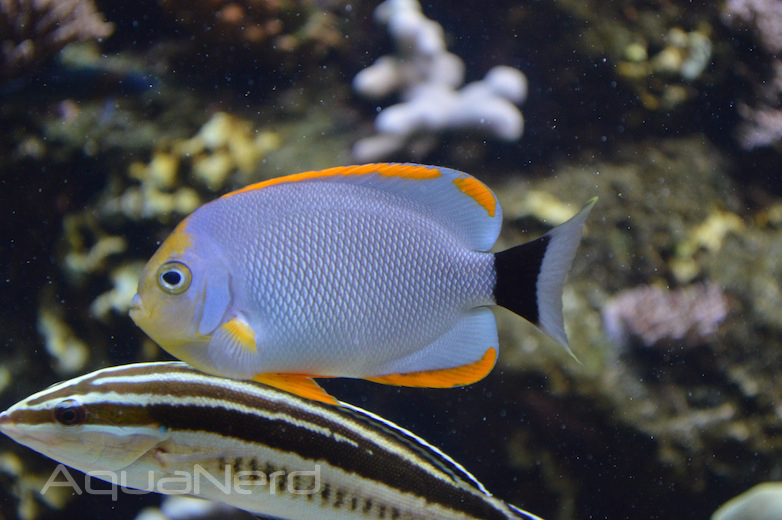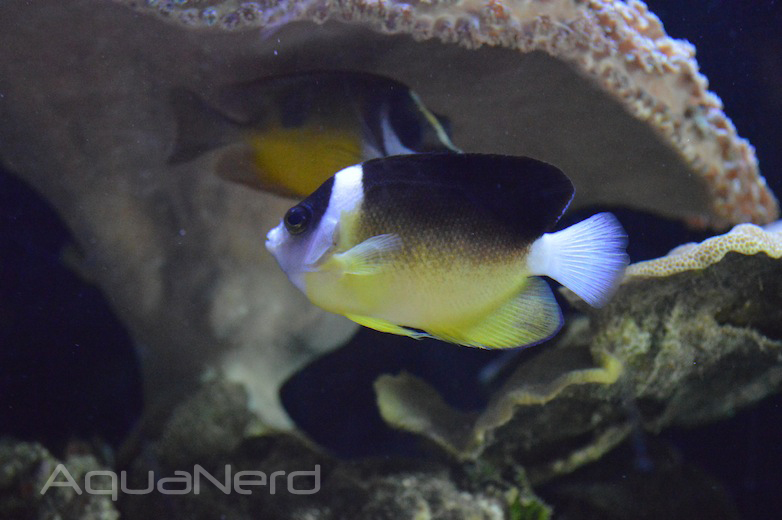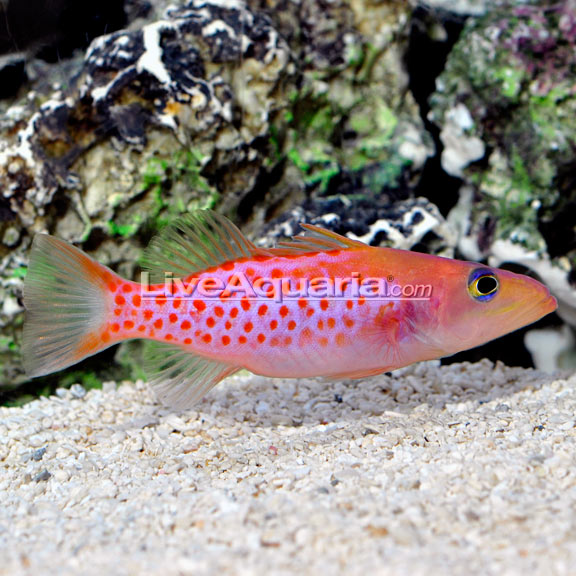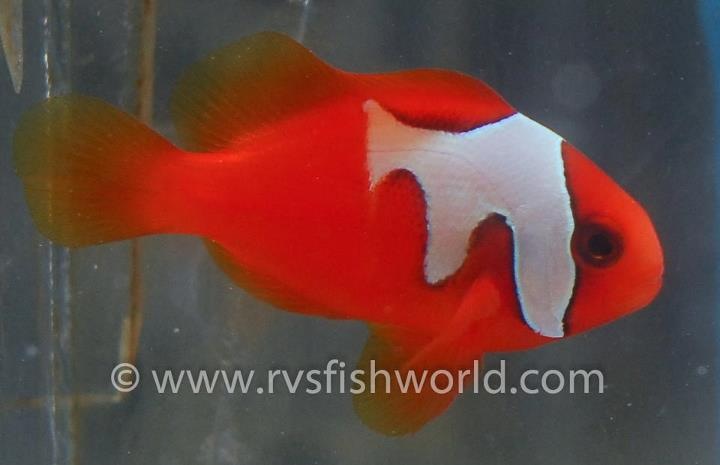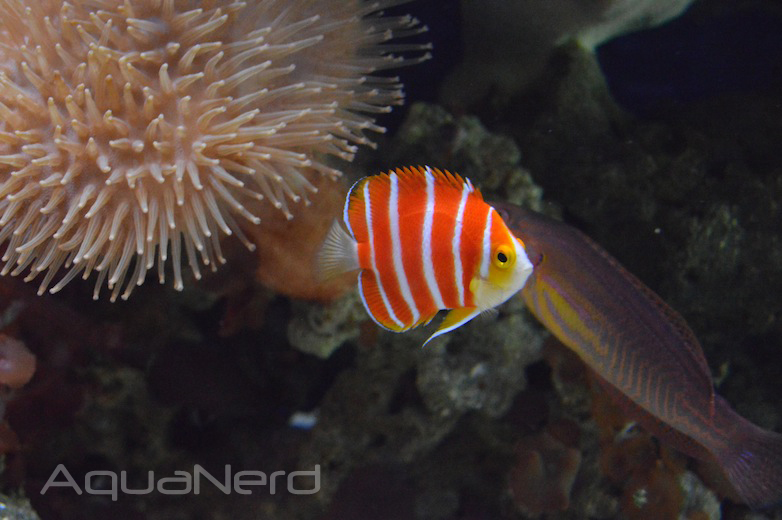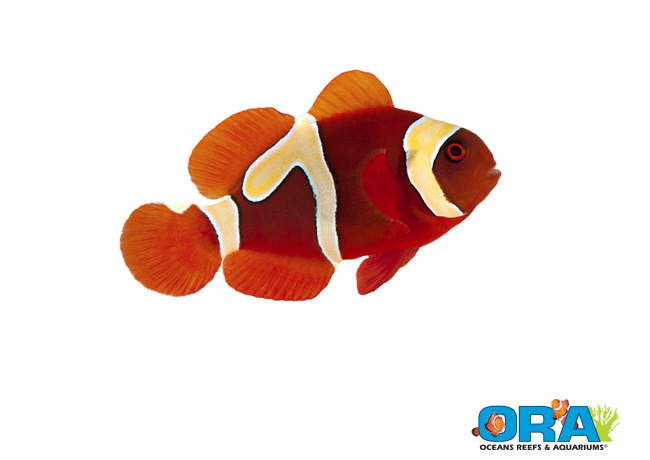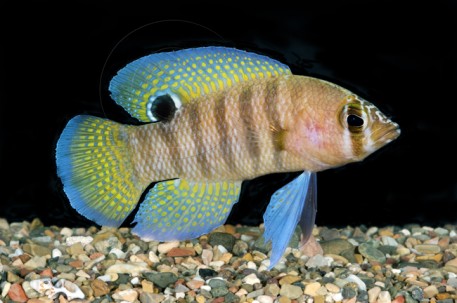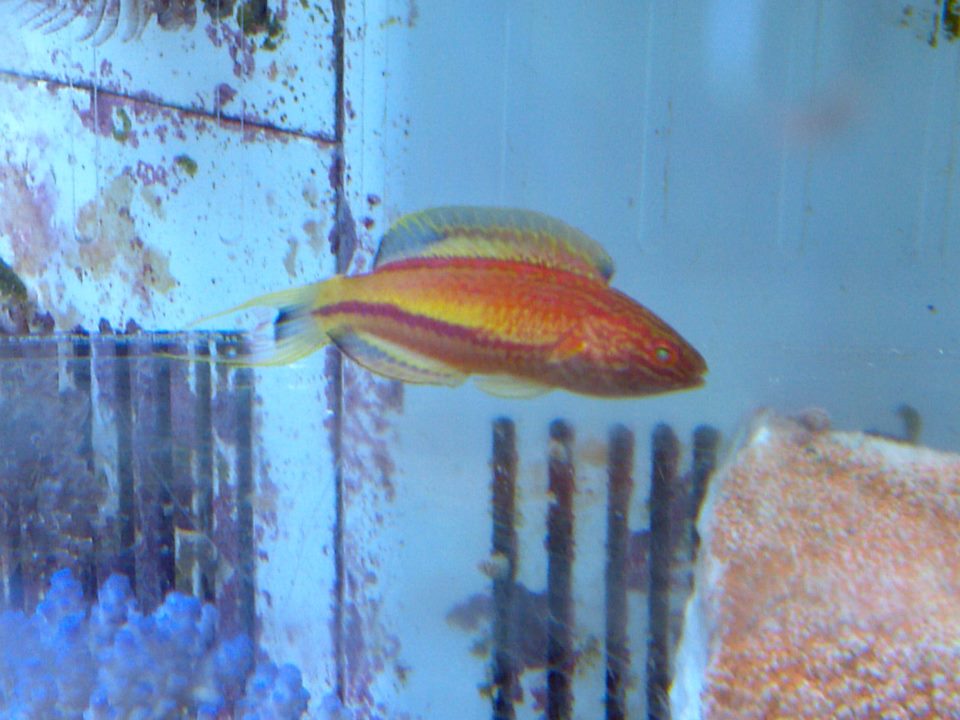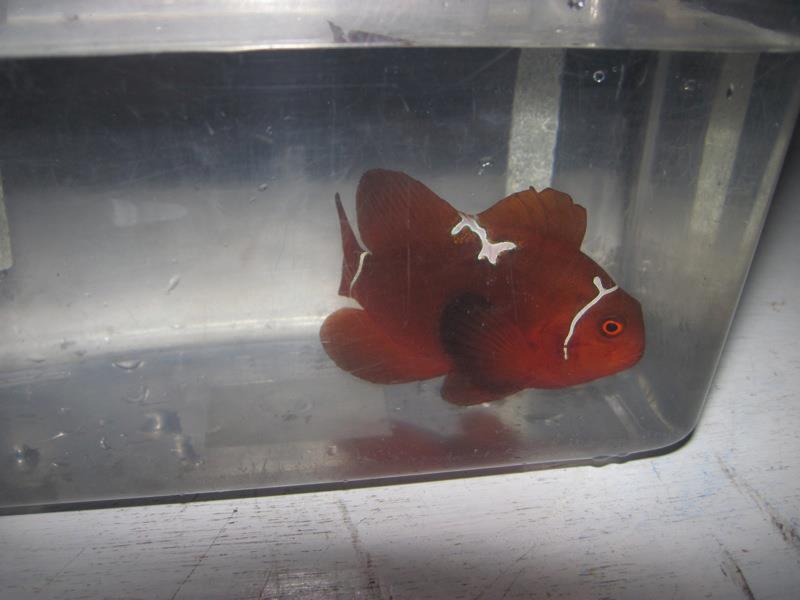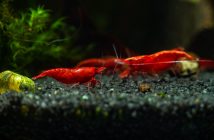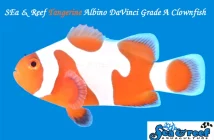Over the past 12 months, we have written all about new aquarium equipment releases from a whole bunch of different manufacturers, and we would be remiss if we didn’t talk about all of the exciting rare livestock that showed up this year. After all, it’s the livestock that is the driving force in this hobby. So, we’ve compiled a year long roundup of some of our favorite fish that we wrote about in 2012. Some of the fish in our list are showing up as one-of-a-kind aberrant individuals, while others are just so rare in the hobby that their presence is deserving of our attention. Either way, the list is full of fish that we’d only be lucky to see in a public aquarium or in a video online.
Narcosis Angelfish
While the Narcosis angelfish (Centropyge narcosis) isn’t new to the aquarium trade, it made its first ever appearance in the U.S. in 2012 thanks to the guys at LiveAquaria. This rare angelfish was hand collected by Quality Marine in the Cook Islands at a depth of 360 feet and spent a lot of time acclimating to the aquarium life in the tank of LiveAquaria director, Kevin Kohen. It was listed for sale in the LiveAquaria Diver’s Den. Another Narcosis angelfish was acquired by Blue Harbor in Japan earlier this year.
Masked Angelfish
The masked angelfish didn’t make any big headlines in 2012, but that isn’t going to stop us from naming it one of our favorite fish of the year. That’s because we got to see these lovely angelfish in the flesh at the new Northwestern Hawaiian Islands exhibit at the Waikiki Aquarium in September. Last year, the Waikiki Aquarium unveiled the exhibit, which housed the extremely rare masked angelfish along with other Hawaiian endemic fish such as the bandit angelfish, pyramid butterflyfish, and convict tangs.
Abei’s Angelfish
Speaking of the Waikiki Aquarium, we saw another extremely rare fish while making the rounds at the world famous exhibit, the Abei Angelfish (Centropyge abei). This deepwater angel may not look like much, but it’s actually the only known individual in captivity and one of the rarest angelfish in the world. This individual was reportedly caught by renowned collector Richard Pyle a few years ago in Palau.
Dr. Seuss Soapfish
If we tossed out rarity and were judging fish just by how unique they looked, the Dr. Seuss Soapfish would win every time. This fish oddball looks like a mish mash of a few different fish, hence the whimsical name, and in 2012 just three individuals showed up in the aquarium trade. Of course, LiveAquaria was in on the Dr. Seuss action, as was Pacific Island Aquatics. The two fish sold for $6000 and $3500 respectively.
Phantom Tomato Clownfish
Looking back, we would have never thought that a tomato clownfish would catch our attention as much as one individual caught by RVS Fish World in the Philippines. But this was no ordinary tomato clown. The fish collectors brought in an aberrant individual, which was dubbed the “Phantom Tomato Clownfish”, and it exhibited a stripe pattern that was reminiscent of a Picasso clownfish. We were not told where the clownfish ended up, or how much it sold for, but it was an interesting fish that deserved every bit of attention it got, and then some.
Peppermint Angelfish
The peppermint angelfish (Paracentropybe boylei) is the most striking angelfish around, hands down. Its vibrantly red body with thin white stripes give it a clean and stunning look, and we were fortunate enough to get a first hand look at this amazing fish at none other than the Waikiki Aquarium. This individual is only the second known to be in captivity currently, and it shares a tank with the Abei’s angelfish. Talk about two rare tankmates! This peppermint angel was caught by Richard Pyle and is on permanent loan to the Waikiki Aquarium.
ORA Goldflake Maroon Clownfish and Gold Nugget Maroon Clownfish
Oceans Reefs & Aquariums, or ORA for short, released some beautiful captive-bred fish this year, with the ORA Goldflake Maroon Clownfish and the ORA Gold Nugget Maroon Clownfish being the high notes. The goldflake, as the name suggests, is a maroon clown with irregular bars that turn gold as the fish matures. The gold nugget, on the other hand, takes that irregular barring a lot farther. Its entire body is covered in one big splotch, much like a platinum picasso clownfish, with only its face and fins showing the maroon coloration. The ORA Goldflake clownfish hit store shelves in 2012, but the Gold Nugget has yet to be officially released, though they’re expected early next year.
Lipogramma robinsi
Every once in a while, a fish comes along that is so rare that the video or images posted by the person who owns it are the only known to the rest of the world. Such is the case for this Lipogramma robinsi, which was spotted on video for the first time thanks to the guys at Blue Harbor in Japan. The extremely rare fish was collected earlier this year in Curacao at a depth exceeding 500 feet. At this depth, the pressure is so great that collectors have to use a submersible to catch their fish.
Coral Sea wrasse, Cirrhilabrus squirei
Blue Harbor is known for getting their hands on some of the rarest fish in the world, and they even get the chance to house fish that are not yet described by science. In June, the famous Japan based livestock dealer acquired a Cirrhilabrus squirei wrasse, a fish that didn’t have an official scientific name but merely had a name agreed upon by renowned ichthyologist John E. Randall. The name is taken from Lyle Squire of Cairns Marine, who we believe either caught the fish or facilitated its capture in some major way, though we were never able to confirm that. All of that aside, the fish is incredibly beautiful and sports some cool markings.
Lightning Maroon Clown Precursor
Back in 2010, the Lightning Maroon Clownfish was hauled up from the depths of Papua New Guinea. Two years later, we saw some the first Lightning clownfish offspring from Matt Pedersen, but that wasn’t the only news related to rare PNG maroon clownfish. This year, EcoReef UK caught several more unique looking maroon clowns out of that area, and one in particular showed somewhat similar markings to the Lightning clownfish, albeit they were far less elaborate. We dubbed the fish a precursor to the lightning maroon clownfish, and it renewed our hopes that another one of those crazy looking fish would be caught some day.


